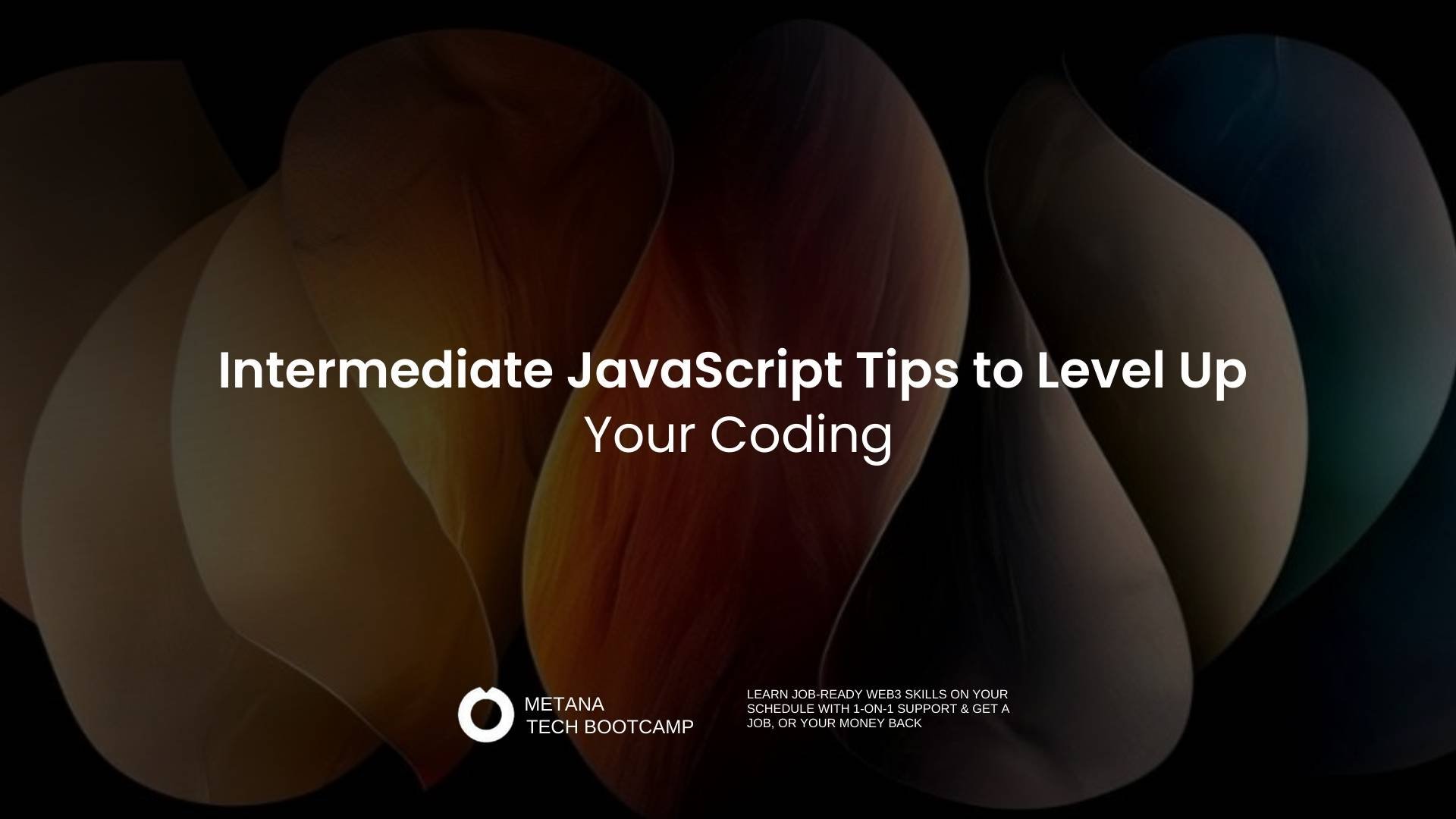TL;DR: Intermediate JavaScript Tips
- Design patterns → Apply small patterns (Singleton, Observer) for scalability
- Closures → Manage private state and remember values
- async/await → Cleaner async code than nested
.then() - Array methods → Use
map,filter,reduce,findfor cleaner loops - Modules → Organize code with
import/export - Modern ES features → Arrow functions, destructuring, template literals
- Type safety → Add JSDoc or TypeScript for fewer bugs
- Linting & formatting → Use ESLint + Prettier for clean code
Intermediate JavaScript Tips: A Step Beyond the Basics
As a beginner, you probably learned how to use if statements, loops, functions, and simple HTML/JS interaction. But JavaScript has many more powerful features that can help you write cleaner, faster, and smarter code.
This guide is for intermediate developers, you already know the basics, and now you’re ready to go further by learning more advanced (but easy to follow!) concepts that will level up your skills.
Now let’s look at some simple but powerful intermediate JavaScript tips that can make your code more professional.
Closures – Remembering Values
One of the most important intermediate JavaScript tips you can learn is closures. Closures allow JavaScript functions to “remember” the scope where they were created, even after that scope has exited. This means variables inside a function can stay alive and be accessed later, making closures great for things like data encapsulation, state management, and creating private variables without using classes.
Why it matters:
- You can create private variables or simple states without using classes.
async/await – Handle Delays Better
Another essential intermediate JavaScript tip is using async/await. Async/await is a modern way to write asynchronous code that looks and behaves more like synchronous code. Instead of using confusing .then() chains or callback functions, async functions allow you to use await to pause execution until a Promise resolves, making your code easier to read and debug.
Why it matters:
- Most real-world code deals with servers or APIs. This makes it clean and clear.
Cleaner Loops with map, filter, find
One of the best intermediate JavaScript tips is using built-in array methods like map, filter, and find. These methods allow you to transform and extract data without using manual loops. This approach makes your code shorter, cleaner, and easier to follow, especially when dealing with lists or data transformations.
Why it matters:
- Your code will be shorter and easier to understand.
Break Your Code Into Modules (Files)
As your JavaScript project grows, keeping all the logic in one big file quickly becomes messy and hard to manage. Using modules lets you separate concerns by splitting your code into multiple files, each handling a specific feature or responsibility. With export and import, you can easily reuse and organize functions, components, or constants, making your code cleaner, more maintainable, and easier to debug.
Why it matters:
- It keeps your code organized as your project grows.
Use Modern JavaScript Features
Modern JavaScript (ES6 and beyond) includes features like arrow functions, destructuring, template literals, and optional chaining. These features reduce boilerplate code, improve readability, and offer more expressive syntax that makes your development faster and less error-prone. Learning and using these features is one of the most valuable intermediate JavaScript tips to apply to your daily coding.
Why it matters:
- These features save time and reduce bugs.
Add Type Safety with JSDoc or TypeScript
Type safety is another key concept for intermediate JavaScript tips. Ensuring that your variables and functions are used correctly by defining what types they should hold helps avoid bugs. Whether you use JSDoc annotations or TypeScript, adding types reduces bugs, improves editor support, and helps teammates understand your code better.
Use Linting and Formatting Tools
Installing these tools is an essential intermediate JavaScript tip:
- ESLint – Finds mistakes in your code.
- Prettier – Makes your code look neat and consistent.
ESLint and Prettier are essential tools for enforcing code quality and style in JavaScript projects. ESLint warns you about potential bugs and bad practices, while Prettier automatically formats your code, helping teams maintain consistency and professionalism across the codebase.
Learn Small Design Pattern
As you grow as a developer, learning small design patterns can help you write more scalable and maintainable code. Simple design patterns like Singleton, Factory, and Observer are reusable solutions to common programming problems. Understanding these patterns will help you think more like a senior developer.
Example:
- Singleton – Only one copy of an object is allowed.
Conclusion
Improving in JavaScript doesn’t mean writing harder code. It means writing smarter and cleaner code. Try one new thing at a time, practice often, and you’ll become a stronger developer step by step.
These intermediate JavaScript tips will help you write better, more maintainable code, and level up your development skills.
FAQs
When should I use reduce instead of a loop?
Use reduce when you need to combine an array into a single value, like calculating totals, averages, or grouping items. If you’re only iterating for side effects, a regular loop or forEach is simpler.
Is async/await always better than .then()?
Not always. .then() works well for short, simple promise chains. async/await is better for multi-step asynchronous code with clearer error handling using try/catch.
How do I decide between Web Workers and setTimeout?
Use Web Workers for CPU-heavy tasks (like image processing or big data calculations) since they run on a separate thread. Use setTimeout when you just want to delay or break up lighter tasks on the same thread.








